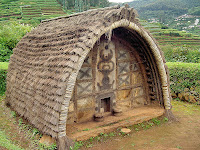India's culture is marked by a high degree of syncretism and cultural pluralism.It has managed to preserve established traditions while absorbing new customs, traditions, and ideas from invaders and immigrants; multicultural concerns have long informed India’s history and traditions, constitution and political arrangements. Many Indian cultural practices, languages, customs, and monuments are examples of this co-mingling over centuries.
Notable architectural creations, such as the Taj Mahal and other examples of Mughal architecture, examples of Dravidian architecture are the result of traditions that combined elements from several parts of the country and abroad. The vernacular architecture displays notable regional variation.
Indian music is highly diversified. Classical music is mainly split between the North Indian Hindustani and South Indian Carnatic traditions. Highly regionalised forms of popular music include filmi and folk music like bhangra. Many classical dance forms exist, including bharatanatyam, kathakali, kathak, kuchipudi, manipuri, odissi and yakshagana. They often have a narrative form and are usually infused with devotional and spiritual elements.
The earliest literary traditions in India were mostly oral and were only later transcribed. Most of these are represented by religious texts such as the Vedas, the Mahabharata, and the Ramayana; Sangam literature from Tamil Nadu is among India's oldest. Among many notable Indian writers of the modern era, using both Indian languages and English, Rabindranath Tagore is perhaps the most famous.
The Indian film industry is the world's largest producer of feature films with Mumbai-based "Bollywood," which produces commercial Hindi films as its most recognisable face. Other strong cinema industries are based on the Tamil, Telugu, Kannada, Malayalam, Bengali, and Marathilanguages.
The cuisine of India is diverse, as ingredients, spices and cooking methods vary from region to region. Rice and wheat are the nation's main staple foods.The country is notable for its wide variety of vegetarian and non-vegetarian cuisine. Spicy food and sweets are popular in India.
Traditional Indian dress greatly varies across the regions in its colours and styles and depends on various factors, including climate. Popular styles of dress include the sari for women and the lungi or dhoti for men.
India's national sport is field hockey, even though cricket is the most popular sport. In some states, football , tennis has also gained popularity. Chess, commonly held to have originated in India, is also gaining popularity with the rise of the number of recognized Indian grandmasters. Traditional sports include kabaddi, kho-kho, and gilli-danda, which are played nationwide. India is home to the age-old discipline of yoga and to the ancient martial arts, Kalarippayattu and Varma Kalai.
Indian festivals come in a vast variety; many are celebrated irrespective of caste and creed. The most popular holidays are Diwali, Holi, Onam, Dussehra, Bihu, Durga puja, the two Eids, Christmas, Ugadi, and Vaisakhi. India has three national holidays. Traditional Indian family values are highly respected.
"What makes a nation, is the past, what justifies one nation against others is the past", says the noted historian Eric Hobsbawm.
Hence, when talking of a nation, it becomes very imperative that the past should also be talked about. And the past of India is as fascinating and interesting as it is momentous.
PROUD TO BE AN INDIAN !
JAI HIND !
.jpg)





0 comments:
Post a Comment